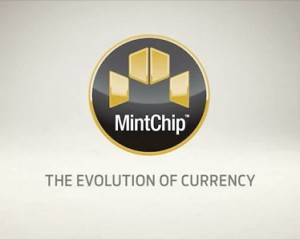Are Computers Funny?

Pretty funny for a computer.
My friends sometimes say that they can’t tell if I’m joking or not. I wonder if they’re more like computers than we might like to think.
As you may know, computers can actually create jokes. They have a much more difficult time identifying jokes. Sort of like some of my friends.
Constructing a joke often means following a pattern and, as we know, computers are pretty good at following patterns. As Margaret Boden points out, , “Humor is essentially a matter of combinatorial creativity.” Scott Weems seconds the notion, “When we create a joke we’re not inventing new thoughts or scripts, we’re connecting ideas in new ways.”
We’ve seen this before with innovation and creativity. Some of our most successful innovations are mashups of two or more relatively prosaic ideas. Rather than thinking outside the box, we pull old ideas from multiple boxes and combine them in new ways. The wheel is not a new idea. Nor is luggage. Only recently did we think to combine the two to create wheeled luggage.
Can a computer combine ideas in a humorous way? Well, sure. This morning I created about a dozen new jokes using the Joking Computer on the University of Aberdeen website. Here are the two best ones:
What do you call an American state that has a lip? Mouth Carolina.
What’s the difference between aluminum foil at noon and an amusing garden? One is a sunny foil; the other is funny soil.
They both follow a pattern involving rhymes, word substitutions, puns, and antonyms. I doubt that either one of them made you laugh out loud but they’re kind of cute.
Then I went to the Humorous Agent for Humorous Acronyms – HAHAcronym – website. Unfortunately, it doesn’t seem to be active any more. I found two things humorous about this project. First, it could generate acronym definitions like:
MIT – Mythical Institute of Theology
FBI – Fantastic Bureau of Intimidation
Second, the project was funded by the European Union. Can you imagine the U.S. Congress funding something similar? It would almost certainly win a Golden Fleece award.
You may think that these software programs are not clever at all. They simply repeat a pattern. But we humans often follow similar patterns (sometimes called scripts) to create humor. Here’s one that I learned long ago and still use on occasion:
You can make most any sentence mildly funny by appending to it one of two endings:
….., said the Bishop to the chorus girl. Or
….., said the chorus girl to the Bishop.
So, are we no better than computers? In some forms of joke production, we’re similar. But there are many forms of joke production. But the big difference is joke recognition and appreciation. Weems provides an example of a joke that we would get but a computer wouldn’t:
He is so modest that he pulls down the shades before changing his mind.
Why wouldn’t a computer get it? Because a computer doesn’t have world knowledge. It doesn’t understand that you might pull the shades before changing your clothes but that changing your mind is quit a bit different than changing your clothes.
Will computers ever catch us in humor appreciation and production? I suspect they will and fairly soon as well. I was surprised at how quickly computers solved the problem of driving cars. Or of grading essays almost as well as I can. It shouldn’t be long before computers can actually make us LOL.
Bitcoin and Permissionless Innovation

It’s a platform.
When I started this website, I didn’t need to ask anyone’s permission. An enabling platform was already in place. The platform consisted of the Internet, the World Wide Web, and many pieces of open source software. All I needed to do was download the latest version of WordPress, rent some space on a web server, and I was off to the races.
The key element, of course, is an open, accessible platform that facilitates innovation. In my case, the platform is a collection of Internet-based technologies. Other permissionless innovation platforms include the interstate highway system, the human genome project, and the public school system. The trick is to provide a platform that anyone can use without prior permission.
I thought about this as I was reading up on Bitcoin. I’ve written about Bitcoin as a currency (here and here). One of my intrepid readers, John Ball, suggested that I’m probably missing the essence of what Bitcoin is all about. John, who understands the technology better than I do, suggests that Bitcoin is a permissionless innovation platform. Here’s what he has to say:
“… Bitcoin has little to do with currency, and everything to do with a protocol and trusted ledger. I suspect we may see multiple ‘digital currencies’ just as we see multiple email systems. However, the concept of peer to peer transactions freed from the tolls of large intermediaries like Visa, Western Union, and First Data, is here to stay and will continue to grow.” (John’s entire comment is here. Just scroll down.)
With Visa, Western Union, or First Data, we have to ask permission and pay fees to use their proprietary system. Similarly, in the early days of software, developers had to ask permission and pay fees to run their programs on proprietary computers. With the advent of open operating systems like Unix, software developers no longer had to ask permission. They simply wrote to the open software platform. As a result, software blossomed and hardware became a commodity.
As John suggests, the same thing seems to be happening in the world of crypto-currencies. John predicts that we’ll see multiple digital currencies. He’s right. In fact, it’s already happening. You can use another permissionless innovation platform called Google to find: Peercoin, Dogecoin, Namecoin, and others. As far as I can tell, all of these are built on the Bitcoin platform. If I had better programming skills, I could create my own currency. Let’s call it Travis Tender.
While Bitcoin (the currency) has certainly had some PR mishaps lately, Bitcoin (the platform) is just starting to blossom. In fact, we might say that Bitcoin is to currency as Unix is to proprietary computing. If so, we’re about to see a wave of innovation that will make the original Bitcoin seem quaint.
Thanks, John.
From Bitcoin to MintChip?

The present.
I first wrote about Bitcoin almost a year ago. At the time, they were selling for $105 each. I didn’t buy any because they had just surged in value and it seemed like a bubble that would surely burst. Today, they’re selling for $664. So much for my ability to forecast the world’s first virtual currency.
There’s a lot that I like about Bitcoins. Their value is based on supply and demand, not government fiat. They’re anonymous like cash but they’re easier to manage and harder to lose. I thought maybe they were theft-proof but I was wrong about that.
On the other hand, there are a lot of things not to like about Bitcoin. Like the fact that so much of the infrastructure is run by shady characters and incompetent (or malevolent) twenty somethings. One of the leading Bitcoin users went by the name Dread Pirate Roberts before he got busted. Bitcoin exchanges – including the largest, Mt. Gox — have been plundered, apparently through sheer incompetence. Just the other day, the Financial Times reported on the first “unnatural death” associated with the Bitcoin universe.
Yet, the price holds steady and shows no signs of returning to where it was a year ago. To be fair, the price skyrocketed to $1,151 in December and has fallen back since – so it was a bit of a bubble. But I would still be happy if I had bought a few Bitcoins at the time I wrote my first article.
And now – apparently – the originator of Bitcoin has been identified. The original Bitcoin manifesto and block of code was published by someone using the name Satoshi Nakamoto. The world assumed that this was a pseudonym and spent many sleepless hours trying to figure out who the “real” author was. Who could write such compact, elegant, and brilliant code? Now Newsweek claims to have found the author. His name is Satoshi Nakamoto, a toy train enthusiast who lives near Los Angeles. (Late breaking news — maybe he’s not the real guy after all).
So, what’s next? Bitcoin has whetted our appetites for a currency that’s not controlled by governments or banks. We seem to like a currency that’s transparent and based on the laws of supply and demand rather than politics. Now if we could just get rid of the crooks and fools.
So where to turn? Perhaps Canada. In 2012, the Royal Canadian Mint announced the MintChip project – a digital

The future?
currency that’s not quite the same as Bitcoin but similar. MintChip got a lot of press when the Canadian government launched the MintChip challenge to create an ecosystem of MintChip apps. The publicity died out quickly but as recently as September 2013, Marc Brûlé, the head of the project, said MintChip is still moving forward and hinted at a MintChip 2.0.
For me, the big differences between Bitcoin and MintChip are that MintChip is run by grownups and backed by a credible government. It has many of the advantages of Bitcoin but few of the disadvantages. After all, we all trust Canada don’t we?
Beauty and Success

Who’s fastest?
Let’s say you interview a candidate for a managerial position in your company. She’s incredibly smart, with an IQ in the 95th percentile. Because she’s so smart, you conclude that she’ll make a great manager. You hire her.
What mistake have you just made? I usually call it the halo effect, a term coined by the psychologist Edward Thorndike. You form a favorable impression about a person – because she’s smart – and therefore assume that she would have other positive attributes – like being a good manager. It’s as if she were wearing a halo. The fallacy is that the attribute you observe may not be related to the attribute you assume. In our example, just being smart doesn’t necessarily mean the candidate will be a good manager – it takes a lot more than intelligence.
We often see the halo effect with physical attractiveness. (The technical term is the physical attractiveness stereotype). There’s been a wealth of research that shows that attractive people are generally more successful than less attractive people. You might expect this in the fashion industry, but it also seems to be true in politics, law, business, and medicine – fields where physical beauty wouldn’t seem to be related to performance. (For a general overview of such research, click here).
Until recently, I’ve assumed that the physical attractiveness stereotype is just a special case of the halo effect. People assume that an attractive person is also good at other (often unrelated) activities. Because observers make that assumption, the attractive person may get more opportunities to advance than a less attractive person. It’s not the beautiful person’s fault. It’s a cognitive bias from observers.
But what if it’s not? What if the genes that make a person attractive also make him or her more athletic, more competent, and more intelligent? What if beautiful people really are more capable than us average shmoes?
Erik Postma’s recent research seems to point in exactly that direction. Postma studied the relationship between attractiveness and success in the Tour de France bicycle race. If physical attractiveness separates the winners from the losers in such a grueling event, it would strongly suggest that the underlying mechanism that causes attractiveness also provides other advantages as well. Maybe beautiful people really are more capable.
And that’s exactly what Postma found. Postma asked 816 people (72% female) to rate the attractiveness of 80 riders in the 2012 Tour de France. He then correlated attractiveness to success in the race. After a lot of statistical manipulation, he found that “the top 10% of cyclists in the race were reckoned 25% more attractive than the bottom 10%.” (Postma’s original article is here. Popular summaries are here, here, and here. For an interview with Postman about his article, click here.)
As always, there’s still a lot to learn. For one thing, only men were rated. Does the same effect apply to women? Who knows? Additionally, women rated attractiveness somewhat differently than men. The riders rated most attractive by women were among the top cyclists in terms of overall endurance. The riders rated most attractive by men tended to be stronger at sprint events, where speed is more important than endurance. Why the difference? Again, who knows?
What does it all mean? It’s not completely clear but attractive people may just be more capable than less attractive people. The evidence is not strong but it’s enough to make me think that I should get a facelift before my next bike race.
Should You Listen To Customers?

An elegant solution.
I used to teach a research methods class for social sciences students. I emphasized that there’s a big difference between researching animal behavior and human behavior. Animals can’t talk so you have to observe them. The more closely you observe, the more you’ll discover.
People, of course, can talk. So we often listen to them. That can be a big mistake because what we say often doesn’t correspond to what we do. For instance, we overestimate our contribution to a team project. If we remember something vividly, we assume that it happens more frequently than it really does. If a task is enjoyable, we underestimate how long it lasted. If a task is onerous, we overestimate the time it takes. (It’s the theory of relativity: time moves slower when you’re with your relatives.)
By listening to customers, we’ll collect many of these distorted views of reality. If we bake these distortions into our product strategy, we’ll develop products that don’t match what people really do or even what they really want.
Steve Jobs famously said, “It’s not the customer’s job to know what they want.” I’ve always interpreted this to mean, “Customers can’t tell you what they want. They probably don’t know. But if you observe them closely, you can figure it out before they do.” Many people see Jobs as a great technologist. I see him as a great observer of human behavior.
I thought of this the other day when my car informed me that I needed to add windshield washing fluid. That meant I needed to open the hood. I open the hood so rarely that I forget how to do it. That meant that I had to find the owner’s manual to figure out how to open the hood to add the fluid.
For most of my life, I would have accepted that this is just the way things are. I wouldn’t have questioned it. I certainly wouldn’t have thought to tell a market researcher that what I really wanted was to add windshield fluid without opening the hood. Like Steve Jobs said, that’s not my job.
Now that I’m older and grumpier, though, I asked myself if there weren’t a simpler way to add windshield fluid. With a little research, I found that Volvo had already designed such a car. In 2004, Volvo presented a concept car designed by women. The designers observed human behavior and noticed that people open their car’s hood only to replace the windshield fluid.
So why, they asked themselves, design a car with a hood that opens? Volvo could build a simpler, less expensive, and stronger car by eliminating the hood opening. They could easily design a different way to add the windshield fluid (as in the picture). Owners could drive a safer, less costly car and meet their window washing needs more easily. It’s a win-win-win. (By the way, a mechanic can easily remove the entire front end of the car at the shop).
If you listen to customers, you may get incremental improvements to products that you already offer. If you want breakthroughs – and radical new products – you need to observe customers. It’s time to treat customers like animals and stop listening to them.